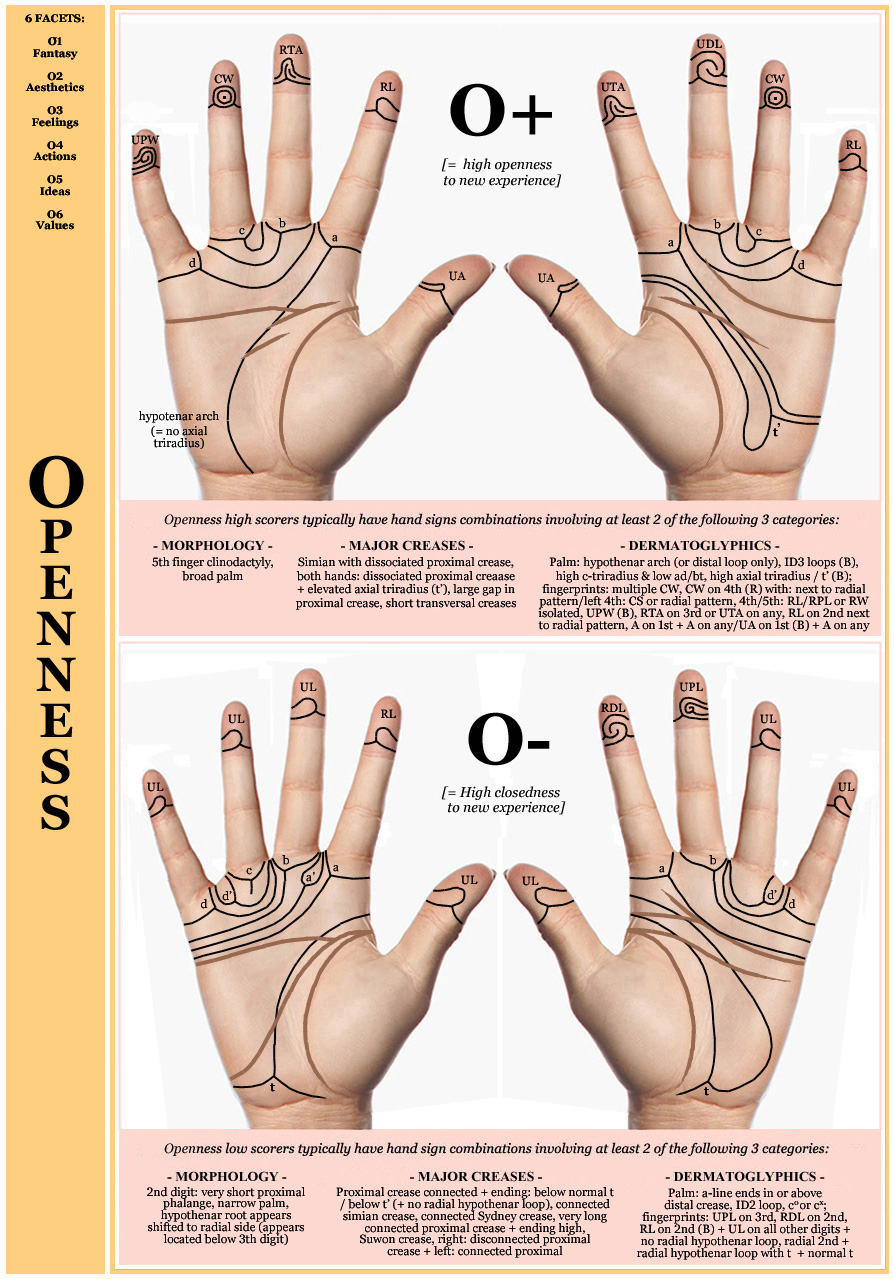|
- Publication date: june 5, 2017 - Hand Constellations in
|
|
|
The following 8 hand signs/constellations represent a distal movement of energy
in major creases & dermatoglyphics in the palm; all eight bare significance for
high scorers on the Big Five personality dimension Openness:
O+ hand sign 1A: very large gap in the proximal crease (= head line);
O+ hand sign 1B: a dissociated proximal crease in the left hand located at a larger distance from the thenar crease (= life line) compared to the right hand;
O+ constellation 1C: both hands dissociated proximal crease & high positioned axial triradius (t' or t");
O+ constellation 1D: both hands dissociated proximal crease & ID3 loop;
O+ constellation 1E: in the same hand dissociated proximal crease & very high positoned axial triradius (t") & ID3 loop;
O+ constellation 1F: in the same hand high positioned axial triradius (t' or t") & missing c-triradius;
O+ constellation 1G: high positioned c-triradius & narrow palmar triradial area (both hands: ad/bt < 0,63);
O+ constellation 1H: in the same hand dissociated proximal crease & hypothenar has ulnar loop (without any other loops) & ulnar loop on digit 2.
A detailed assessment of the hands of 71 high scorers & 45 low scorers on the Big Five personality dimension Openness has pointed out that these seven hand signs/constellations bare significance for high scorers (O+):
• O+ hand sign 1A: proximal crease gap [7 out of 71 O+ scorers (= 9,8%), 0 out 45 O- scorers (= 0,0%)];
• O+ hand sign 1B: larger distance in left dissociated proximal crease [16 out of 71 O+ scorers (= 22,5%), 1 out 45 O- scorers (= 2,2%)];
• O+ constellation 1C: both hands dissociated proximal crease & t'/t" [12 out of 71 O+ scorers (= 16,9%), 0 out 45 O- scorers (= 0,0%)];
• O+ constellation 1D: both hands dissociated proximal crease & ID3 loop [10 out of 71 O+ scorers (= 14,1%), 0 out 45 O- scorers (= 0,0%)];
• O+ constellation 1E: single hand dissociated proximal crease & t" [4 out of 71 O+ scorers (= 5,6%), 0 out 45 O- scorers (= 0,0%)];
• O+ constellation 1F: single hand t'/t" & missing c [4 out of 71 O+ scorers (= 5,6%), 0 out 45 O- scorers (= 0,0%)];
• O+ constellation 1G: high c triradius & narrow triradial area [8 out of 71 O+ scorers (= 11,2%), 0 out 45 O- scorers (= 0,0%)];
• O+ hand sign 3H: dissociated proximal crease & hypothenar has an ulnar loop & ulnar loop on digit 2 [2 out of 71 O+ scorers (= 4,2%), 0 out 45 O- scorers (= 0,0%)].
Combining these six hand signs accounts for 35 out of 71 O+ scorers (= 49,3%) versus only 1 out of 45 O- scorers (= 2,2%); a visual impression for 3 of these hand sign constellations is presented in the pair of hands below.
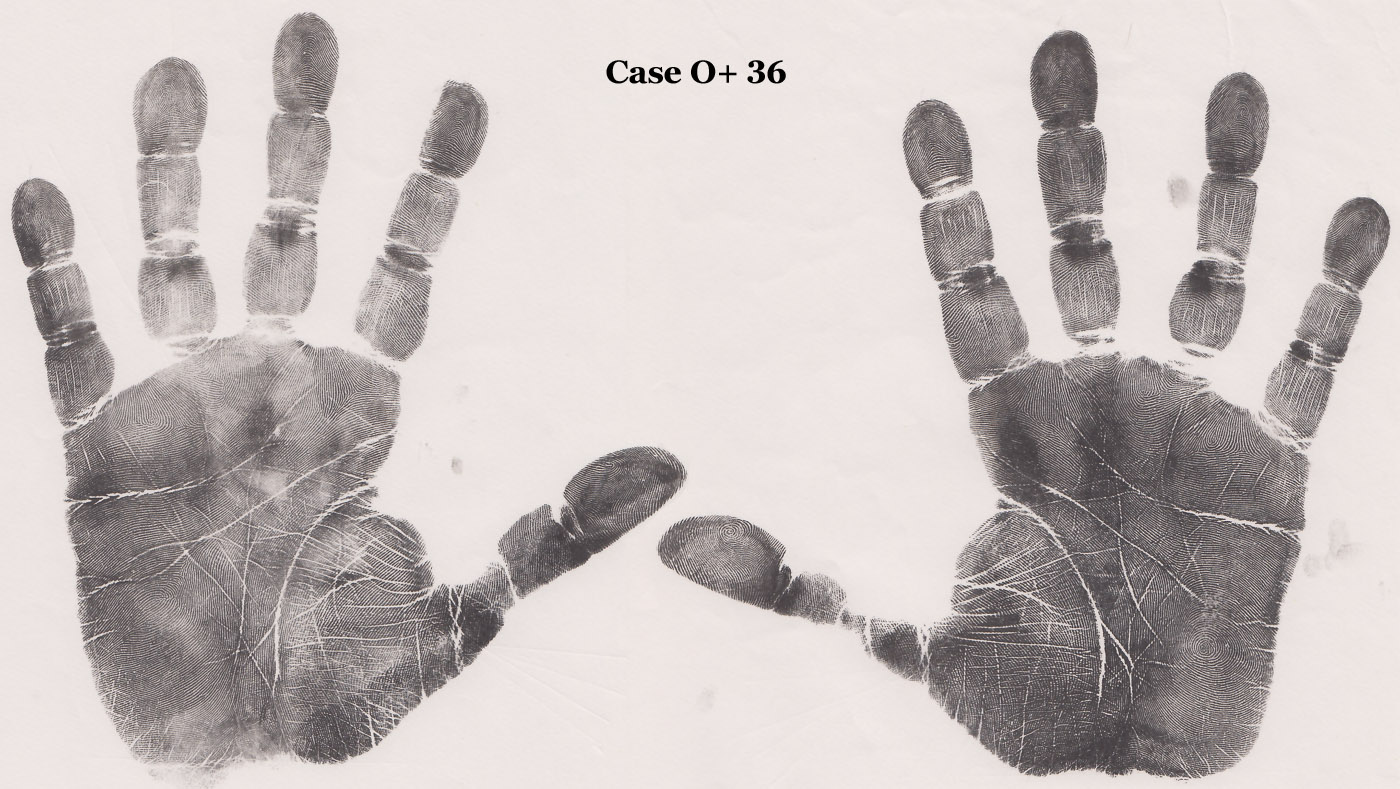
The following 2 hand signs/constellations involve hand morphology; both bare significance for
high scorers on the Big Five personality dimension Openness:
O+ constellation 2A: broad palm in both hands [FL/PB < 0,95 & PB/PL>0,81] + optional: short transverse creases [measured via mid-axis of index finger for distal crease and pinky for proximal crease];
O+ hand sign 2B: clinodactyly of the 5th digit (= pinky).
A detailed assessment of the hands of 71 high scorers & 45 low scorers on the Big Five personality dimension Openness has pointed out that these two hand signs/constellations bare significance for high scorers (O+):
• O+ constellation 2A: broad palm both hands + optional: short transverse creases [13 out of 71 O+ scorers (= 18,3%), 0 out 45 O- scorers (= 0,0%)];
• O+ hand sign 2B: clinodactyly 5th digit [6 out of 71 O+ scorers (= 8,4%), 0 out 45 O- scorers (= 0,0%)].
Combining these 2 hand signs accounts for 19 out of 71 O+ scorers (= 26,7%) versus only 0 out of 45 O- scorers (= 0,0%); a visual impression for each of both of these hand sign/constellations is presented below.
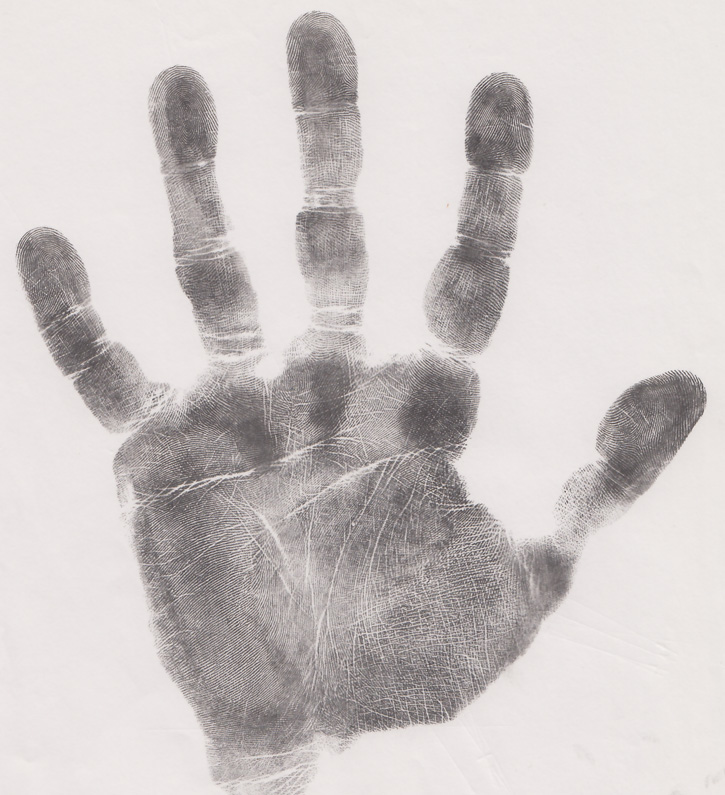
The following 7 hand signs/constellations involve the dermatoglyphics; all bare significance for
high scorers on the Big Five personality dimension Openness:
O+ constellation 3A: RL/RPL on 4th or 5th digit, or RW without a radial pattern on the bordering fingers;
O+ hand sign 3B: RTA on 3rd digit or UTA on any digit;
O+ hand sign 3C: UDL on digit 1, 2, 4 or 5;
O+ constellation 3D: RL on digit 2 with bordering RA, RTA, RDL or RW;
O+ constellation 3E: CW on multiple fingers;
O+ constellation 3F: UPW & no extralimital triradii in both hands;
O+ hand sign 3G: hypothenar arch / distal loop without any other patterns.
A detailed assessment of the hands of 71 high scorers & 45 low scorers on the Big Five personality dimension Openness has pointed out that these two hand signs/constellations bare significance for high scorers (O+):
• O+ constellation 3A: RL/RPL on 4th/5th digit, or RW without radial bordering pattern [7 out of 71 O+ scorers (= 9,8%), 0 out 45 O- scorers (= 0,0%)];
• O+ hand sign 3B: RTA on 3rd digit or UTA on any digit [7 out of 71 O+ scorers (= 9,8%), 0 out 45 O- scorers (= 0,0%)];
• O+ hand sign 3C: UDL on digit 1, 2, 4 or 5 [6 out of 71 O+ scorers (= 8,4%), 0 out 45 O- scorers (= 0,0%)];
• O+ constellation 3D: RL on digit 2 with bordering RA, RTA, RDL or RW [6 out of 71 O+ scorers (= 8,4%), 0 out 45 O- scorers (= 0,0%)];
• O+ constellation 3E: CW on multiple fingers [5 out of 71 O+ scorers (= 7,0%), 0 out 45 O- scorers (= 0,0%)];
• O+ constellation 3F: UPW & no extralimital triradii in both hands [3 out of 71 O+ scorers (= 4,2%), 0 out 45 O- scorers (= 0,0%)];
• O+ hand sign 3G: hypothenar arch / distal loop without any other patterns [3 out of 71 O+ scorers (= 4,2%), 0 out 45 O- scorers (= 0,0%)].
Combining these 7 hand signs accounts for 37 out of 71 O+ scorers (= 52,1%) versus only 0 out of 45 O- scorers (= 0,0%); a visual presentation on how to recognize the mentioned fingerprint variations is described HERE.
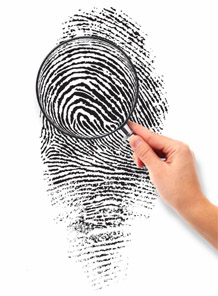
The following 3 hand signs/constellations represent a tendency for the major creases
towards closed constellations; all 3 bare significance for low scorers
on the Big Five personality dimension Openness:
O- hand sign 4A: Sydney line connected with thenar crease or high terminating long head line connected with life line, combined with in the same or the other hand one of the following four hand signs (1) simian line constellation, (2) dissociated proximal crease in right hand + connected proximal crease in left hand, (3) low set c-triradius or c-triradius missing, (4) ID2 loop;
O- hand sign 4B: connected proximal crease ends below axial triradius / proximal crease ends below a normal axial triradius;
O- hand sign 4C: Suwon crease constellation in left hand.
A detailed assessment of the hands of 71 high scorers & 45 low scorers on the Big Five personality dimension Openness has pointed out that these seven hand signs/constellations bare significance for low scorers (O-):
• O- hand sign 4A: connected Sydney or long high transverse crease combined with 1 of 4 signs [2 out of 71 O+ scorers (= 4,4%), 14 out 45 O- scorers (= 31,1%)];
• O- hand sign 4B: (connected) proximal crease ends below a (high positoned) axial triradius [0 out of 71 O+ scorers (= 0,0%), 7 out 45 O- scorers (= 15,5%)];
• O- hand sign 4C: Suwon crease constellation in left hand [3 out of 71 O+ scorers (= 4,2%), 3 out 45 O- scorers (= 6,6%)].
Combining these two hand signs accounts for 5 out of 71 O+ scorers (= 7,0%) versus only 21 out of 45 O- scorers (= 46,6%); a visual impression for each of these hand sign constellations is presented below:
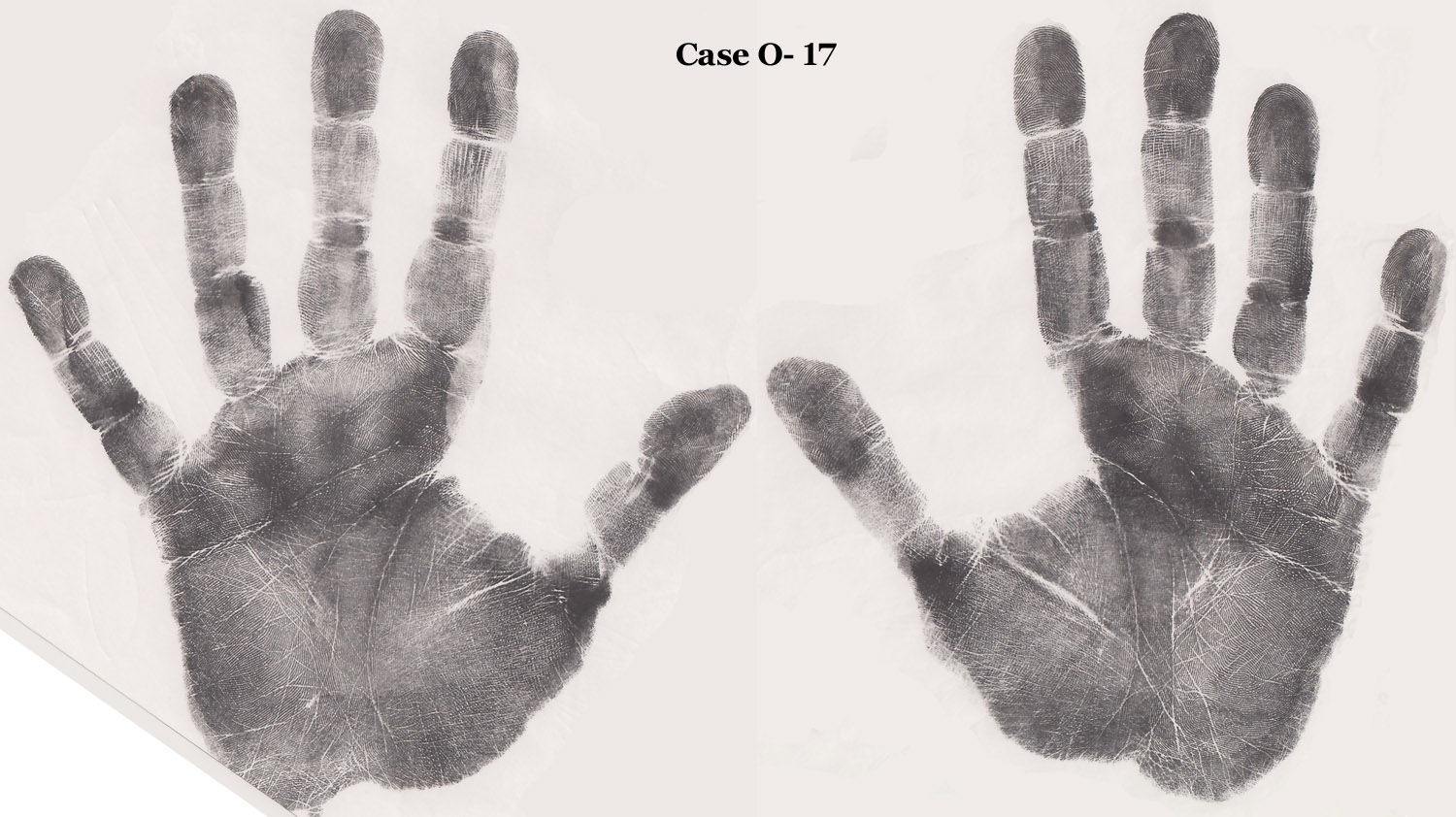
The following 2 hand signs/constellations involve hand morphology; both bare significance for
low scorers on the Big Five personality dimension Openness:
O- constellation 5A: narrow palm in both hands [FL/PB > 1,00 & PB/PL<0,79] + long transverse creases [measured via mid-axis of index finger for distal crease and outside of pinky for proximal crease];
O- hand sign 5B: apparently central located root of hypothenar (assessment based on the position of the 3rd digit);
O- hand sign 5C: very short proximal phalange of 2nd digit (no more than 2 of all other digit phalanges are shorter).
A detailed assessment of the hands of 71 high scorers & 45 low scorers on the Big Five personality dimension Openness has pointed out that these two hand signs/constellations bare significance for low scorers (O-):
• O- constellation 5A: narrow palm both hands + long transverse creases [2 out of 71 O+ scorers (= 2,8%), 4 out 45 O- scorers (= 8,8%)];
• O- hand sign 5B: central located root of hypothenar [6 out of 71 O+ scorers (= 8,4%), 11 out 45 O- scorers (= 24,4%)].
• O- hand sign 5C: short proximal phalange 2nd digit [1 out of 71 O+ scorers (= 1,4%), 4 out 45 O- scorers (= 8,8%)].
Combining these 3 hand signs/constellations accounts for 9 out of 71 O+ scorers (= 12,6%) versus only 17 out of 45 O- scorers (= 37,7%); a visual impression for each of these 3 hand signs/constellations is presented below.
and on the right side the left hand of an Openness low scorer (O-) with: short proximal phalange of 2nd digit.
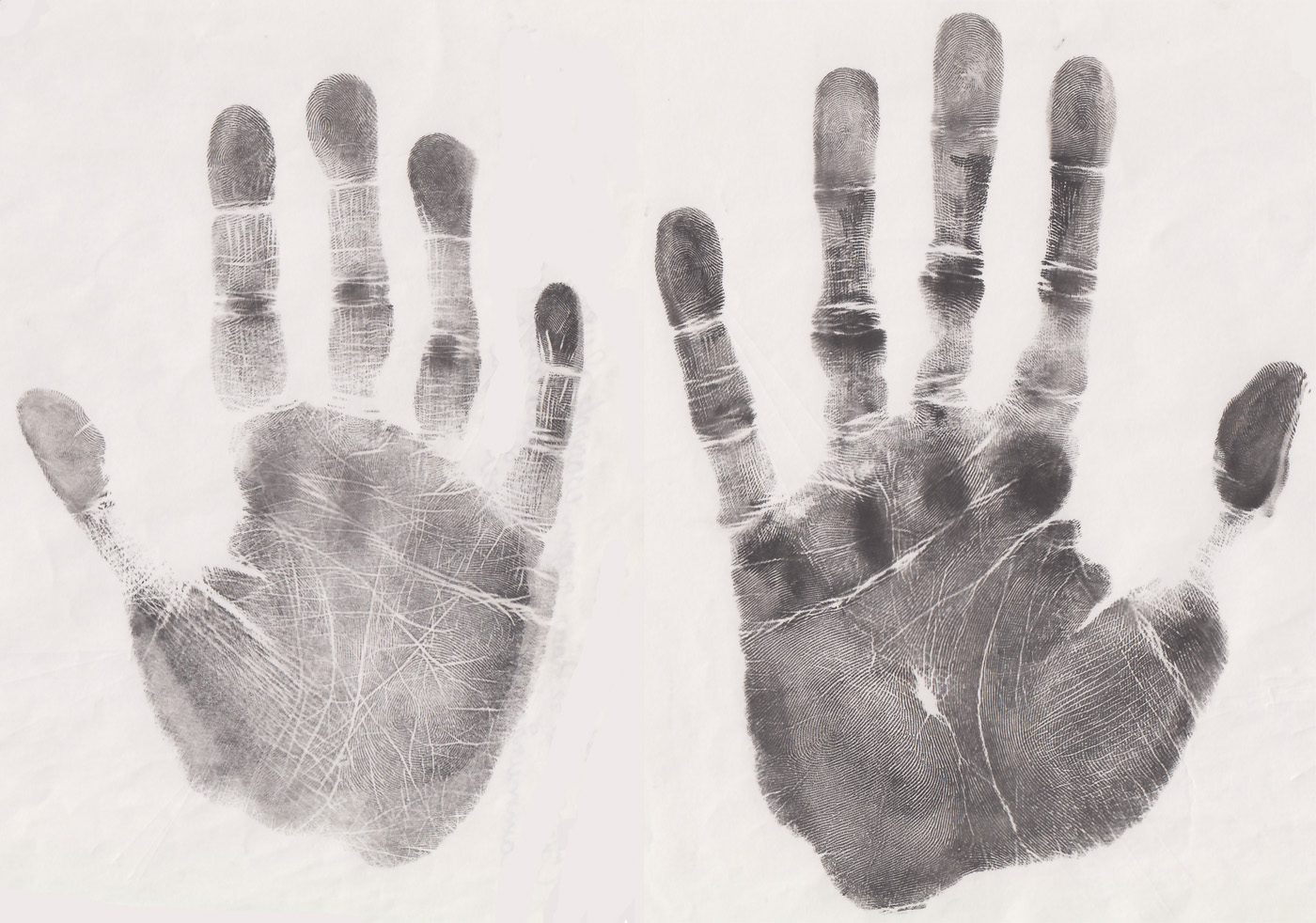
The following 7 hand signs/constellations involve the dermatoglyphics; all seven bare significance for
low scorers on the Big Five personality dimension Openness:
O+ hand sign 6A: radial double loop on 2nd digit;
O+ hand sign 6B: ulnar pocket loop on 3rd digit;
O+ constellation 6C: ID2 loop + CW on digit 2 + RW on digit 3;
O+ constellation 6D: terminating c-line + missing triradius/T fingerprint/simian line;
O+ constellation 6E: RL on both 2nd digits + UL on all other fingers + without a radial hypothenar loop;
O+ constellation 6F: radial loop on 2nd digit + radial hypothenar loop featured with extratriradius plus a normal axial triradius;
O+ constellation 6G: UL on 8 or 9 digits with no more than 2 extralimital patterns + ID4 loop in at least 1 palm + at least 2 palmar loops in one palm + both proximal creases connected.
A detailed assessment of the hands of 71 high scorers & 45 low scorers on the Big Five personality dimension Openness has pointed out that these seven hand signs/constellations bare significance for low scorers (O-):
• O- hand sign 6A: radial double loop on 2nd digit [0 out of 71 O+ scorers (= 0,0%), 3 out 45 O- scorers (= 6,6%)];
• O- hand sign 6B: ulnar pocket loop on 3rd digit [0 out of 71 O+ scorers (= 0,0%), 4 out 45 O- scorers (= 8,8%)];
• O- constellation 6C: ID2 loop + CW on digit 2 + RW on digit 3 [0 out of 71 O+ scorers (= 0,0%), 2 out 45 O- scorers (= 4,4%)];
• O- constellation 6D: terminating c-line + missing triradius/T fingerprint/simian line [0 out of 71 O+ scorers (= 0,0%), 3 out 45 O- scorers (= 6,6%)];
• O- constellation 6E: RL on both 2nd digits + UL on all other fingers + without a radial hypothenar loop [0 out of 71 O+ scorers (= 0,0%), 3 out 45 O- scorers (= 6,6%)];
• O- constellation 6F: complex radial loop finger-palm combination [1 out of 71 O+ scorers (= 1,5%), 4 out 45 O- scorers (= 8,8%)];
• O- constellation 6G: very complex combination with many small UL fingerprints [0 out of 71 O+ scorers (= 0,0%), 5 out 45 O- scorers (= 11,1%)].
Combining these six hand signs accounts for 1 out of 71 O+ scorers (= 1,5%) versus only 21 out of 45 O- scorers (= 46,6%); a visual presentation on how to recognize the mentioned fingerprint variations is described HERE.
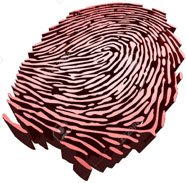
in 71 Openness high scorers (O+) and 45 Openness low scorers (O-):

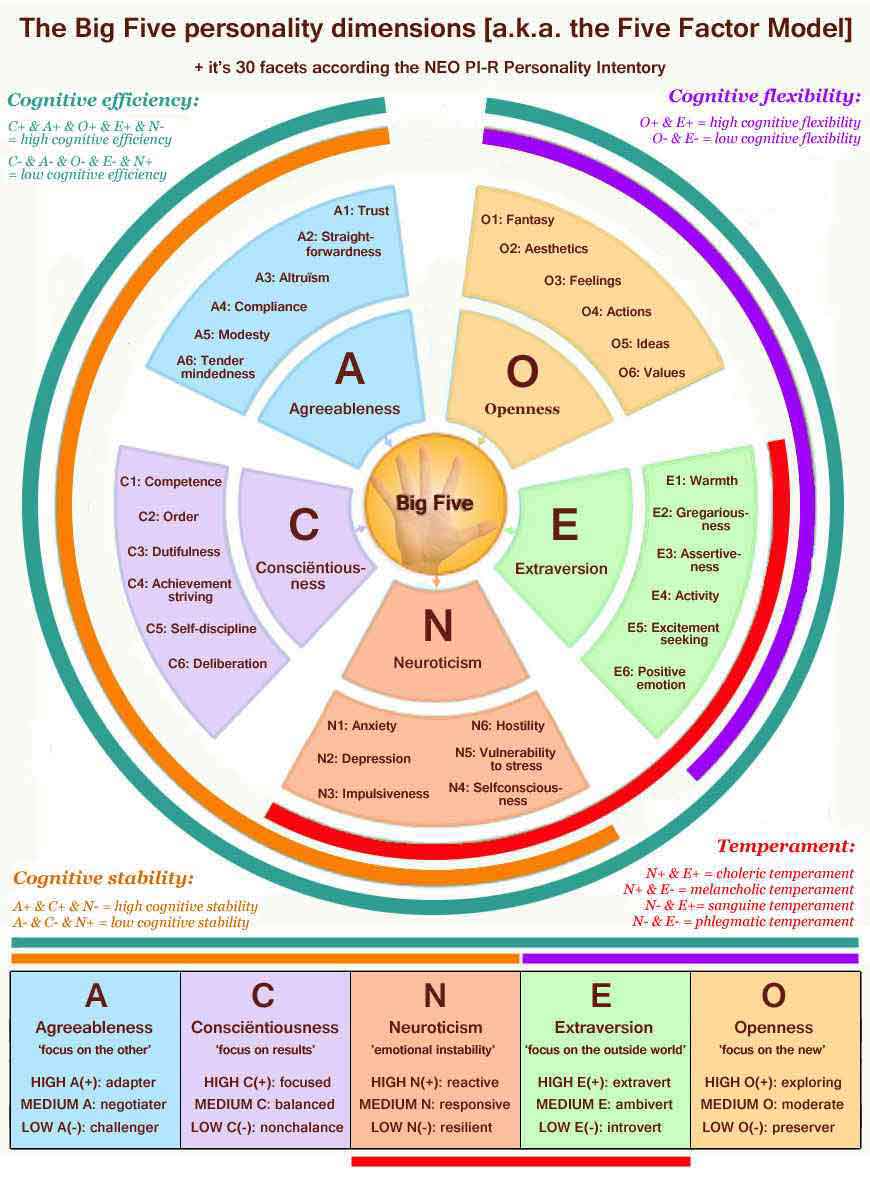
Openness represent a dimension of the Big Five model, a.k.a. the 'Five Factor Model' (FFM).
The model is designed to describe the full 'color-spectrum' of a personality, including:
the classic temperaments, cognitive stability & cognitive flexibility.
Final notification: case studies will become available in the near future; meanwhile you might want to
explore the other four Big Five dimensions Agreeableness, Conscientiousness, Extraversion & Neuroticism!
All Big Five hand charts are presented together inside the article:
Hand sign constellations in the Big Five personality dimensions.
|
|
© COPYRIGHT 2002-2017: |
